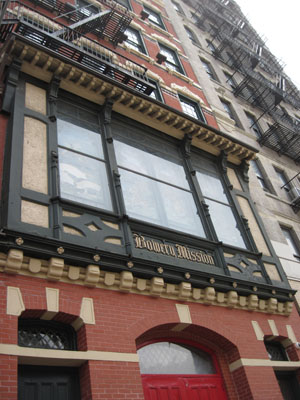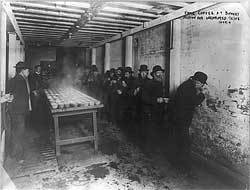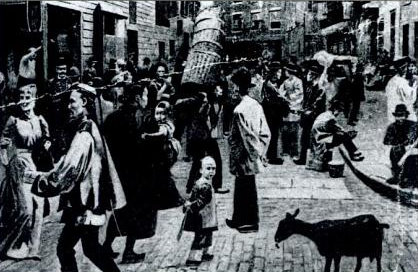New York is the largest city in the United States, so it should not be surprising that there’s plenty of religious organizations that do all manner of charitable work for the downtrodden. Much of this goes unnoticed (charitable organizations often don’t have advertising put in their budgets). However the folks over at “A Journey Through NYC Religions” have included an online photobook of the Bowery Mission (“mission” is one word used by Christians to describe some of their charitable work and organizations).
I’m always keeping an eye out for material related to the Asian American religious experience and I was pleased to see that page 12 includes a short description of the charitable work among some Chinese immigrants back in 1909 (it’s a little blurry but the date is at the top; minor aside: my wife informs me that her great-grandfather was in this part of the country around the time that this story was reported-amazing what things I learn from editing a blog post!). When I saw the headline “Should Our Women Teach Chinese?” I thought at first, “why is teaching Mandarin and Cantonese a problem during this time?” And “why would white Christian women be interested in teaching Chinese at this time anyway?” Ah silly 21st century assumptions. This is about teaching English to Chinese immigrants! This makes sense also since the Bowery shares a border with Chinatown, NYC.
If I did the math correctly, this story appears about 27 years after the Chinese Exclusion Act was passed which (along with other acts) banned most Chinese immigration until 1943. It made me think about what life might have been like for the Chinese who managed to travel all the way from the west coast where much of the immigration work occurred for Asians. Given the racial discrimination emphasized in these immigration laws, I would guess that life was very hard for these men and the few women who clearly stood apart from the other immigrants and the native-born around them. If the politicians and lawmakers advocated this, we should expect that the native-born non-Chinese general population was in rough agreement with these bans and probably acted on their nativist privilege. Barred from work due to race and with limited access to English, I would guess that a lot of Chinese would need to resort to charitable resources either in their ethnic enclave (since they would probably not be allowed to live near whites) or from white Christians in places like the Bowery Mission. They were in a very vulnerable social location and position as a group in America.
And I think about what these experiences must be like for the white Christian women who decided to teach English to these Chinese. They would be well aware that this is a highly disliked group by both white elites and the general population. They took a big risk in sharing their language proficiency with this group. And since this work was done exclusively by women (judging by the title), it reminds me too that white women at this time had significantly circumscribed work. Charitable work like this was one such avenue (keep in mind, the right to vote for women would not be granted until 11 years later in the 1920 passing of the 19th Amendment). My read is that it may be easier for those who are vulnerable to recognize the vulnerabilities of others especially when that vulnerability is structured by race and gender. And some Christians (white Christian women of the Bowery Mission in 1909 for example) I think understand their theology in that light: that being Christian is to understand one’s vulnerability and the vulnerability of others. Moreover, some are empowered by that theology to then act by sharing what resources and advantages they have with those who are similarly disadvantaged or perhaps more disadvantaged.
I admit I am no historian, so I may be completely misreading this and leaving out important details that would drastically change the interpretation of this event. But I do appreciate this window into the past which helps me think about how faith can sometimes motivate vulnerable individuals and groups to aid others who could also use a helping hand. A century later, women’s opportunities in society have improved considerably, so are these dynamics of gender and race still working in the same way today for Christians who volunteer in charitable organizations? Are there other social identities that influence some Christians today to serve those in need that were less apparent a century ago?














